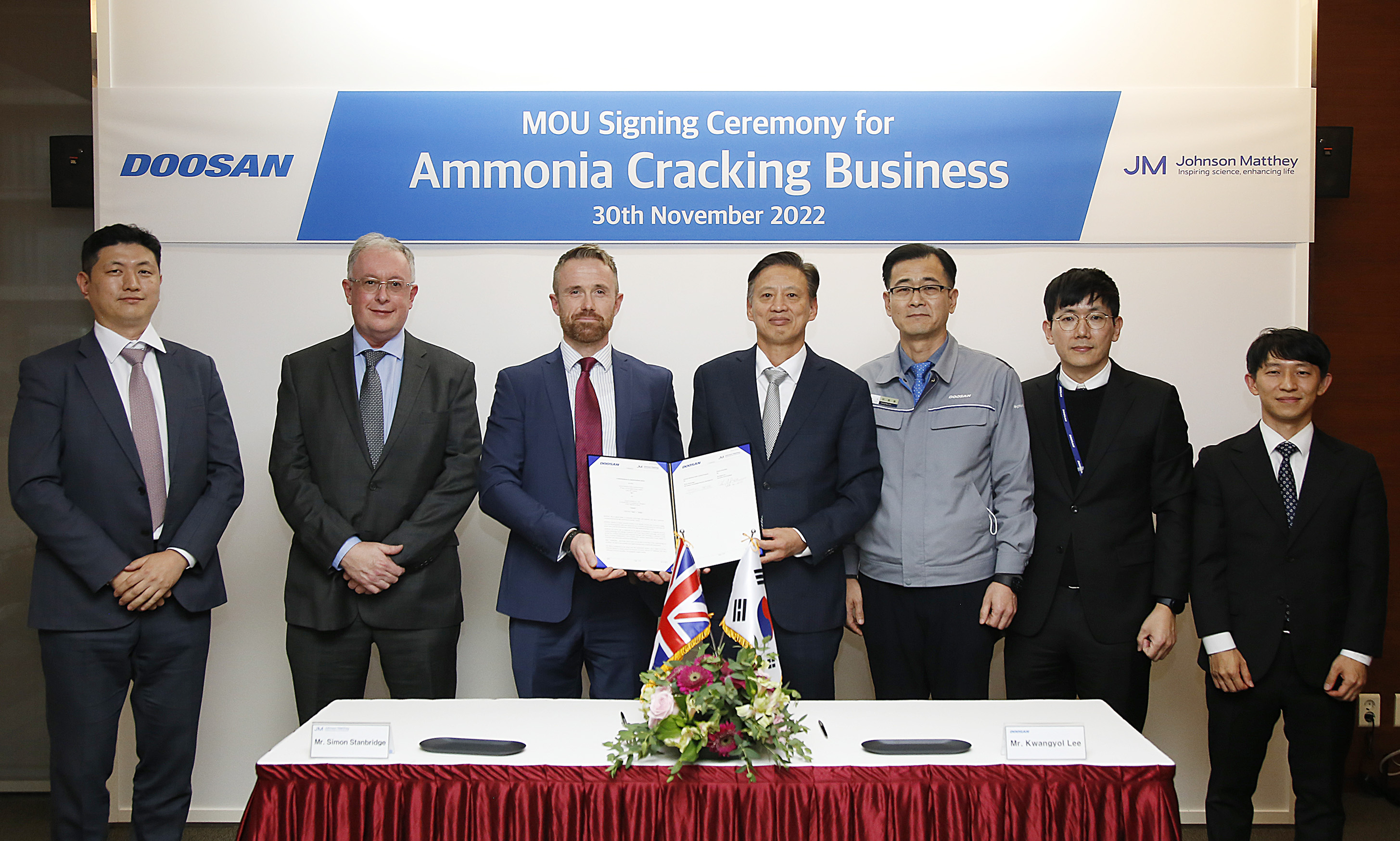Johnson Matthey and Doosan Enerbility partner to develop hydrogen-fuelled power plants
01 December 2022
Johnson Matthey (JM), a global leader in sustainable technologies, and Doosan Enerbility, have signed an agreement to develop hydrogen-fuelled power plants in South Korea. The partnership supports the South Korean Government’s plans to increase the share of clean hydrogen-based power generation from 0% in 2022 to 2.1% by 2030 and 7.1% by 2036.
JM will provide innovative ammonia cracking technology and catalyst, which converts clean ammonia into nitrogen and hydrogen. The clean hydrogen can then be used to power turbines, which are key components of hydrogen-fuelled or hydrogen-LNG fuelled combined cycle power plants.
Analysis from the Korea Institute of Machinery & Materials shows that using ammonia cracking technology to enable hydrogen-fuelled turbines could reduce carbon emissions by 10.4% when a gas turbine is fired up with 30% hydrogen. It can be lowered to 21.4% when there is 50% hydrogen present. According to data from IHS, hydrogen demand in 2030 for power and heat generation is set to be 2.1 – 4.6 million tonnes globally.
Doosan Enerbility’s expects to complete the development of the 380MW 100% hydrogen gas turbine by 2027.
Jane Toogood, Chief Executive of Catalyst Technologies at JM, says: “This is a significant step and could lead to a number of industries introducing clean hydrogen-fuelled turbines in power plants around the world. Whilst the technology we are developing for Doosan is specifically for the power industry, it could also decarbonise downstream industries through access to low carbon power.”
Hongook Park, CEO of Doosan Enerbility’s Power Services Business Group, says: “Ammonia cracking, which is helping to lower the entry barrier to combined cycle hydrogen power generation, is a key technology that will contribute to carbon neutrality. This partnership signifies that the entire value chain for combined cycle hydrogen power generation will be built, resulting in hydrogen production through to hydrogen end-users.”


